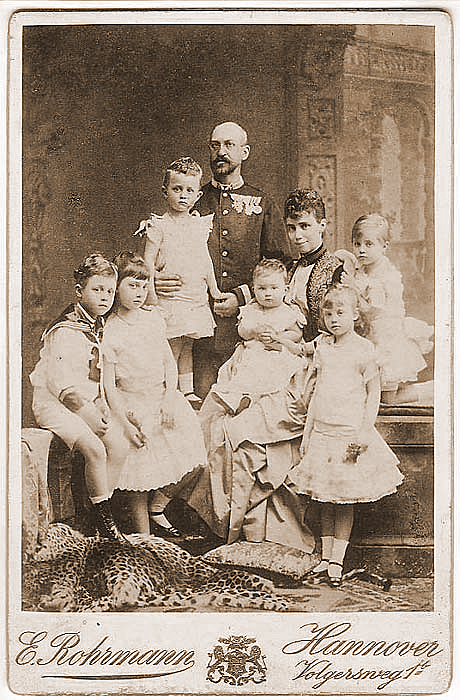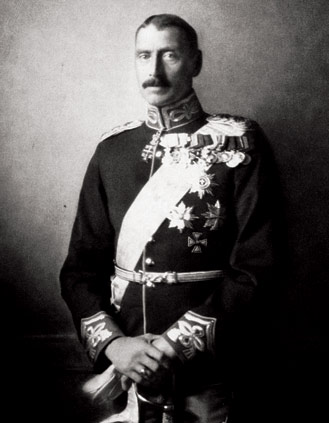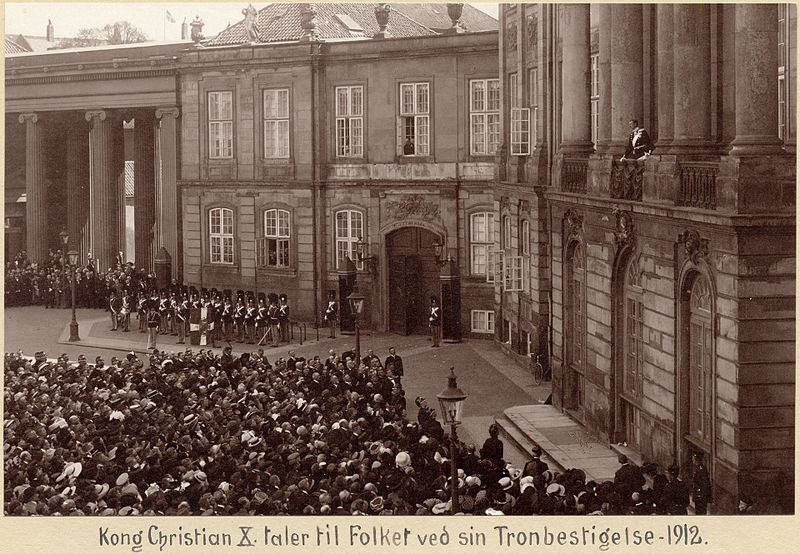by Emily McMahon and Susan Flantzer © Unofficial Royalty 2013
Henri Marie Jean André de Laborde de Monpezat was born on June 11, 1934, in Talence, France. His parents, Count André de Laborde de Monpezat and Renee Doursenot, were members of the French nobility. Renee had previously been civilly married to another man before her marriage to Andre. Her first marriage allowed Renee to marry Andre religiously in 1934, but the couple did not marry civilly until 1948. Henri was the second of eight siblings, however, three of his siblings died in childhood.
Henri began his education at home with a private tutor, continuing on at a Jesuit school in Bordeaux, France. Henri spent several years of his childhood in Vietnam, then under French control, where his father ran a newspaper. He attended a French school in Hanoi, where he took an interest in Vietnamese and Chinese languages. Henri recalled his childhood as a very happy and extravagant colonial life, living in a big house with his parents, siblings, and a nanny.
Henri as a baby with his two-year-old sister Françoise in Vietnam
Henri’s love for Southeast Asia continued into his adolescence and adulthood, as he continued his education at schools in Saigon and Hong Kong. He also studied at Paris University, earning a master’s degree in French literature. Henri was also awarded a diploma in Oriental languages from Ecole Nationale de Langues Oriental.
Henri’s developed a wide variety of interests ranging from flying planes to collecting Chinese porcelain to sailing. Like his future wife, Henri was multi-lingual from an early age. In addition to French, Danish, and English, Henri was fluent in Mandarin Chinese and Vietnamese. After a brief stint in the military, Henri entered the French foreign services. At the time he met Princess Margrethe of Denmark, eldest daughter of King Frederik IX of Denmark and Ingrid of Sweden in 1965, Henri was working as the third secretary at the French embassy in the Department of Oriental Affairs in London.
While studying at the London School of Economics in 1965, Margrethe was invited to a dinner at the French embassy. As an employee of the embassy at the time, Henri was expected to attend but was ambivalent about meeting the Danish princess by whom he was to be seated. Henri later said that to his surprise he found Margrethe interesting from their first meeting, but was a bit intimidated by her and said little during the dinner as a result. Margrethe said she had no real impression of Henri from their first meeting.
Margrethe and Henri were both guests at a wedding shortly after the first dinner. The two chatted at the wedding reception and on the plane ride back to London, as they were seated together once again. Upon their return to London, Margrethe and Henri gradually began seeing more and more – and growing mutual fonder – of one another.
The couple kept a low profile for more than a year, made easier by the fact that Margrethe was not as well known in the United Kingdom. Their relationship was so private that upon the news that an engagement announcement was imminent, most Danes had no idea their princess had been exclusively dating anyone. Margrethe’s father Frederik was later to say to his daughter of her courtship with Henri, “He came, he saw, and you conquered.”
On June 10, 1967, Princess Margrethe married Henri at the Holmens Kirke in Copenhagen, Denmark, followed by a banquet at Fredensborg Palace. After a honeymoon in Cozumel, Mexico, the couple took up residence at Amalienborg Palace, in Christian IX’s Palace (formerly Schack’s Palace).
The couple had two sons:
After the wedding, Henri became a Prince of Denmark and was known by the Danish version of his name, Henrik. On January 14, 1972, King Frederik IX died after a brief illness and Henrik’s wife ascended the Danish throne as Queen Margrethe II. In April 2016, Henrik renounced the title of Prince Consort, which he had been given in 2005. He retired from public life and decided to participate in official events to a very limited extent. Although Henrik remained close to Margrethe, he was vocal about the difficulties he experienced as a male consort (a historically female role) in terms of his personal income and his role in the affairs of the country.
Henrik published several books of poetry in his native language as well as additional books in Danish. Henrik and his wife owned Chateau de Cayx, a wine estate in southern France, where the two spent part of their summers.
The Danish Royal House announced on August 3, 2017, that Prince Henrik would not be buried with his wife Queen Margrethe II of Denmark at Roskilde Cathedral in Roskilde, Denmark, the traditional burial place of Danish royalty. The press release read:
The Royal House has announced today that His Royal Highness Prince Henrik does not want to be buried in Roskilde Cathedral, as it had been planned. The Prince’s decision implies that he will not be buried next to Her Majesty The Queen in the sarcophagus that Professor and sculptor Bjørn Nørgaard has prepared. The Queen has been aware of the decision for some time and supports the decision. The Prince’s decision does not change the Queen’s funeral plans. It has been stated in the media that the Prince wants to be buried in France. This is not correct. The Prince still wishes to be buried in Denmark, but the arrangements are not yet in place.
On September 6, 2017, it was announced that Prince Henrik was suffering from dementia. Prince Henrik was hospitalized on January 28, 2018. Later it was determined that he had a benign tumor in his left lung. On February 9, 2018, the Danish Royal Court announced that his condition had severely deteriorated. Crown Prince Frederik returned home from the Winter Olympics in South Korea which he was attending as a member of the International Olympic Committee. On February 13, 2018, Prince Henrik was transferred from the Rigshospitalet in Copenhagen to Fredensborg Castle, where he wished to stay during his remaining time.
Prince Henrik died peacefully in his sleep on Tuesday, February 13, 2018, at 11:18 pm, at Fredensborg Palace at the age of 83. His wife Queen Margrethe II and their two sons Crown Prince Frederik and Prince Joachim were at his side.
Prince Henrik’s funeral was held on Tuesday, February 20th in the Palace Chapel at Christiansborg Palace in Copenhagen. Per his wishes, it was a private service, with just family and close friends in attendance. His remains were cremated, with half of his ashes spread over the Danish seas, and the other half interred in the private garden at Fredensborg Castle.

Prince Henrik and his family in 2017; Photo Credit – The Danish Monarchy
This article is the intellectual property of Unofficial Royalty and is NOT TO BE COPIED, EDITED, OR POSTED IN ANY FORM ON ANOTHER WEBSITE under any circumstances. It is permissible to use a link that directs to Unofficial Royalty.
Kingdom of Denmark Resources at Unofficial Royalty



























